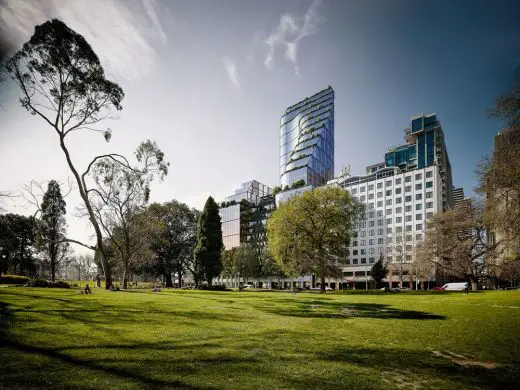10 Design-centric tips for a smooth office relocation, Commercial property advice
Design-Centric Tips for a Smooth Office Relocation
28 May 2025
Relocating an office can be a difficult task. The logistics, planning, and adjustments can overwhelm even the most experienced business leaders. However, one factor many underestimate is the power of design. Purposeful design choices can reduce disruption, support productivity, and boost morale during times of change. Reducing the need for future moves – or implementing plans to mitigate the impact of potential moves due to changing business environments- is financially prudent and logistically advisable. The following strategies will guide you through the physical move and position your company for long-term growth, engagement, and innovation.
- Plan Your Layout with Flexibility in Mind
One of the most important steps during an office relocation involves designing a layout that supports both current needs and future growth. A flexible space accommodates various workstyles and makes it easier to adapt as your company evolves. Divide the office into zones for quiet work, collaboration, and informal meetings. Open-plan layouts can promote communication and creativity while remaining versatile.
For example, companies like Slack have embraced this model, creating distinct “zones” tailored to different work activities. As you plan your layout, think about the flow of foot traffic, group work areas, and quiet zones for focused tasks.
- Invest in Ergonomic Furnishings
Employee well-being should take center stage during your relocation, and ergonomics is more than just comfort. Poor posture and outdated furniture can lead to fatigue, musculoskeletal issues, and dips in productivity. As such, investing in ergonomic furniture is not only a health consideration but a strategic investment in workforce performance and retention. Prioritize employee well-being during workplace transitions, emphasizing that ergonomics extends beyond comfort. Poor posture and outdated furniture negatively impact productivity and can cause musculoskeletal problems. Therefore, investing in ergonomic furniture is a strategic decision that improves workforce performance, health, and retention.
Here’s how to approach this thoughtfully:
- Start with assessments. Evaluate current pain points or employee complaints related to discomfort. This data will guide smart investments.
- Select adjustable solutions. Chairs, desks, monitor stands, and keyboard trays should all offer flexibility. Consider sit-stand desks, especially for departments with long seated hours.
- Create ergonomic standards. Work with vendors to build a baseline for ergonomic compliance across your new office.
Research from the American Journal of Epidemiology links ergonomic improvements with an increase in daily productivity and employee satisfaction. Going further, integrating design consultation services can ensure you’re not just buying furniture, but designing a healthier workflow.
- Prioritize Natural Light and Air Quality
Natural light has a profound impact on employee productivity and mood. According to a study by Human Spaces, employees with access to natural light report a 15% higher level of well-being than those without. A well-lit space can enhance energy levels, reduce eye strain, and increase focus when planning your office relocation. Design spaces that take advantage of natural light sources.
If possible, avoid obstructing windows with bulky furniture or equipment. Instead, position workstations near windows or create shared areas where natural light flows. If natural light is lacking, add high-quality LED lighting that mimics daylight to maintain the desired ambiance.
Ensuring proper air circulation and indoor air quality is also crucial for employee health. Invest in systems that provide fresh air and maintain optimal humidity levels. This simple yet impactful design choice can increase concentration and overall job satisfaction.
- Create an Inclusive Environment
Diversity and inclusion are at the forefront of many workplace initiatives today, and your office design should reflect this. An inclusive office design ensures that every employee can navigate the space, regardless of physical ability. Consider features such as accessible doorways, ramps, and adjustable furniture. Also, various seating options should be incorporated to accommodate different preferences.
When undergoing an office relocation, it’s essential to prioritize inclusivity from the start. According to the National Disability Authority, inclusive design can increase employee engagement and reduce turnover by making all employees feel valued.
- Integrate Technology
Tech infrastructure plays a pivotal role in modern office design. During your office relocation, consider integrating technology into your new space. This could include designing spaces with built-in charging stations, cable management solutions, and screens for video conferencing.
Think about your employees’ needs. Do they need access to fast Wi-Fi in every corner of the office? Are there areas where a projector or digital whiteboard would be beneficial? Technology should complement your office layout, not disrupt it. Investing in the right tech infrastructure will help the office operate well from day one.
- Use Color to Influence Mood and Productivity
Color psychology is a powerful tool in office design. Research suggests that specific colors can influence mood, energy, and productivity. For example, blue tones promote focus, green creates a calming effect, and yellow boosts creativity and optimism.
When planning your office relocation, choose colors that align with your company culture and goals. Use calming tones in spaces that require concentration, while vibrant colors can energize meeting rooms and communal spaces. Creating a harmonious color palette can enhance your new office’s functionality and feel.
- Focus on Acoustics and Noise Management
Noise levels can make or break an office environment. And some studies even indicate that bad acoustics can compound bad ergonomic habits. Minimizing distractions is key, and there are several ways to do this when also dealing with an office relocation. Consider acoustic treatments to reduce noise pollution during your move, such as soundproof panels, carpets, or ceiling tiles.
Providing a balance between open and private spaces can also help. Quiet zones and phone booths allow employees to take calls or focus without distractions. When you design your office with acoustics in mind, employees work with less stress and greater focus.
- Plan for Collaboration and Socialization
Productivity is key, but fostering collaboration and connection holds equal importance. A well-designed office should encourage both spontaneous interactions and formal collaboration. Open meeting areas, comfortable lounges, and café-style spaces can all encourage employees to engage with one another.
Google’s office design blends open workspaces with breakout areas, encouraging collaboration and creativity. When employees feel connected, they experience higher job satisfaction and stronger teamwork.
- Ensure a Smooth Wayfinding System
Navigating a new office can be confusing, especially in larger spaces. Incorporating a clear wayfinding system will help employees feel more at ease in their new environment. Signs, color-coded pathways, and digital directories can guide people to key areas such as restrooms, meeting rooms, and breakout zones.
This system is essential for an office building or multi-floor relocation. A well-designed wayfinding system enhances employee experience by reducing stress and making adapting to the new space easier.
- Communicate and Gather Employee Input
Communication is essential during any office relocation. Share your design plans early and gather feedback from your employees. Conduct surveys or focus groups to understand their preferences and concerns. Involving your team in the decision-making process ensures that the new space supports their needs and enhances their daily work experience.
For example, when Dropbox relocated its office, it held multiple meetings with employees to understand how they work and what they value in an office space. This input helped guide the design process and resulted in an office that reflected the company’s culture and values.
Planning is Key
Office relocation doesn’t have to be chaotic. With the right design strategy, you can create a space that fosters productivity, engagement, and collaboration from day one. By prioritizing flexible layouts, ergonomic furnishings, and inclusive design, you set your business up for long-term success. And by integrating technology and effective wayfinding systems, you reduce confusion and ease the transition.
A well-planned office move creates an environment where employees feel valued, motivated, and inspired. So, as you prepare for your office relocation, consider how design choices can make the transition seamless and elevate your workplace for years to come.
Comments on this 10 Design-Centric Tips for a Smooth Office Relocation article are welcome.
Offices
Offices Posts
Simple ways to reduce distractions open-plan offices
Eco-friendly Office Buildings the Future Workspaces
Is a mobile office right for your business
Commercial Property
Commercial Property Designs Articles
, Melbourne, Victoria, Australia
Architects: Elenberg Fraser

image : Pointilism
388 William Street Offices and Hotel
Comments / photos for the 10 Design-Centric Tips for a Smooth Office Relocation page welcome






